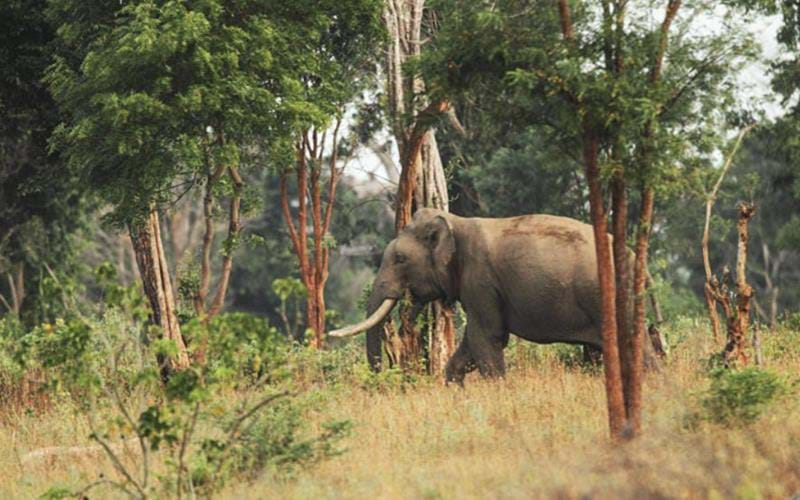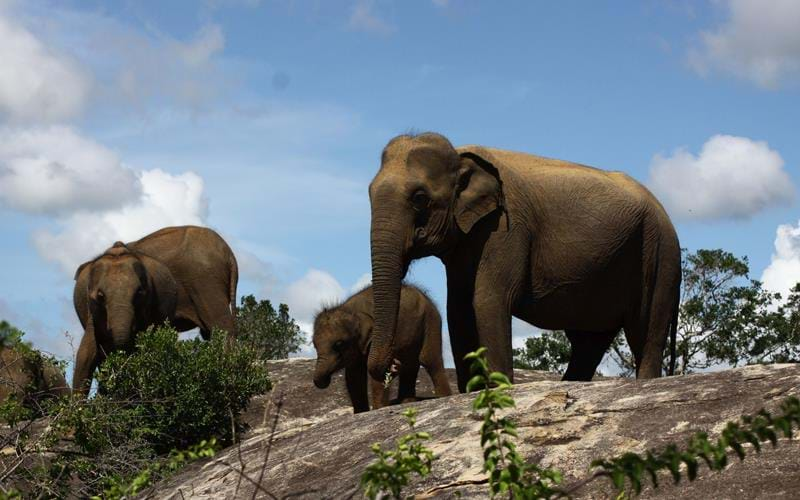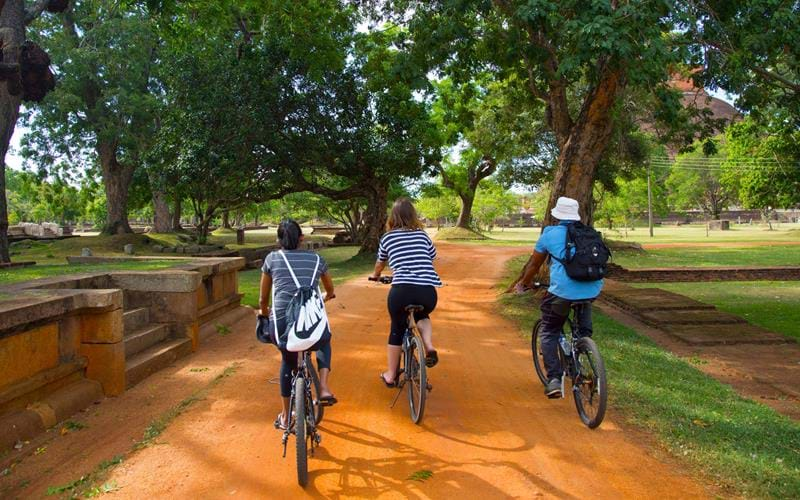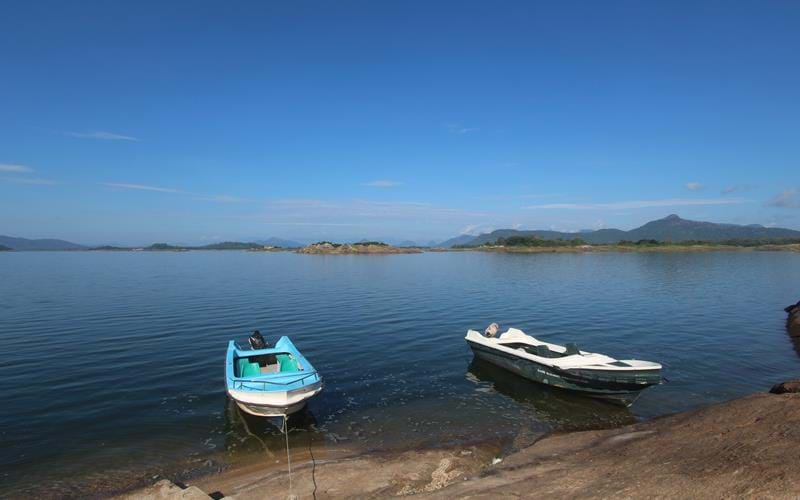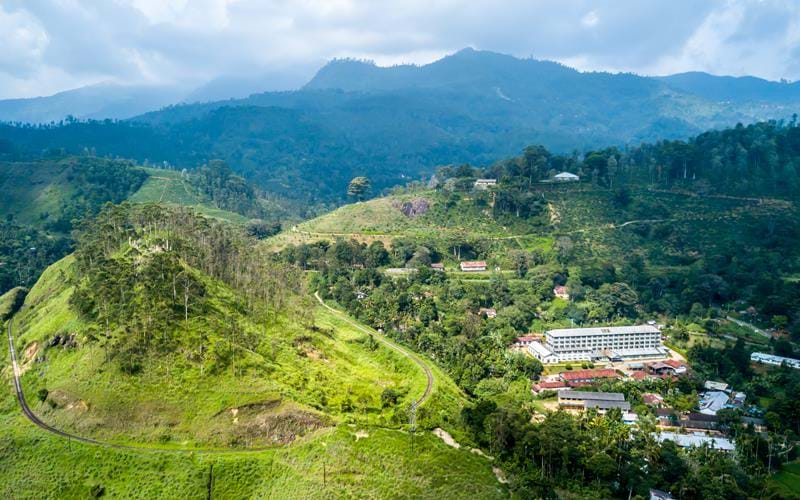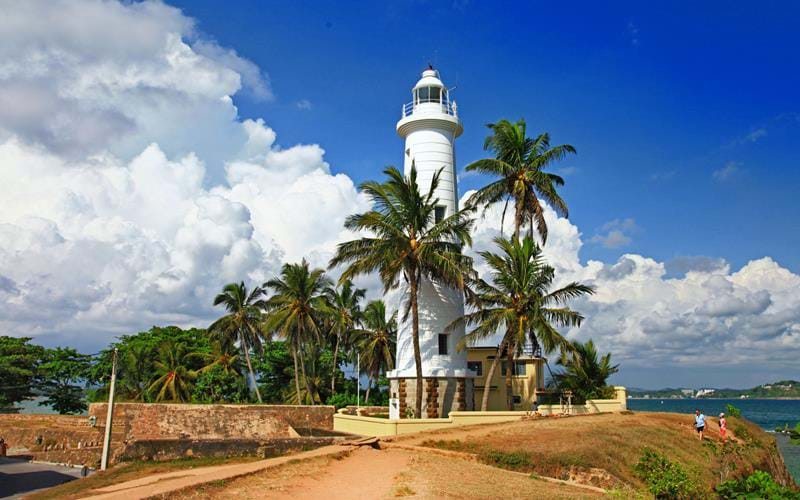Discover the remarkable natural diversity of Sri Lanka, from its ancient history to the huge variety of birds and reptiles in the rainforests; from large…
View more
If you have time for a three week holiday to Sri Lanka and wish to see as much of the island as possible with a break on the beach at the end, this varied itinerary will serve as a useful template. It includes our current favourite resorts, wildlife parks, highland hideaways and off-track gems, as well as the pick of the sights in the Cultural Triangle, stitched together into a seamless trip of 21 days. You’ll get to spend time exploring the colonial backstreets of Galle and Colombo, as well as some far-flung coral islets off the Jaffna Peninsula and little explored corners of the Knuckles Range, with a spell at a gorgeous boutique hotel slap on a beach backed by coconut palms before you head for home.
Throughout the trip the choice of hotels is excellent, offering superlative comfort in prime locations, and at un-beatable prices. In short, this is our benchmark tour of Sri Lanka – a ‘best-of-everything’ trip gathering together the pick of experiences and destinations across Sri Lanka.
Cultural Holidays Wildlife Holidays Family Holidays Honeymoons Beach Holidays Adventure Holidays
Fly overnight to the Sri Lankan capital, Colombo.
On arrival at Colombo’s Bandaranaike International Airport, you’ll be welcomed by your chauffeur-guide and driven north to Wilpattu, Sri Lanka’s largest national park. Spend the remainder of the day recovering from your journey, enjoying the pool and tropical greenery. Preceded by local arrack cocktails, dinner will be an alfresco BBQ.
In the far northeast of Sri Lanka, Wilpattu encompasses 130,000 hectares of savannah and marshland dotted with patches of forest. The area was off-limits to tourists for nearly thirty years during the war, but re-opened again in 2009 and is fast regaining its popularity as a wildlife destination. Its varied habitats support 31 species of mammal, including elephant, jackal, sambar deer, spotted deer, laughing deer, buffalo and mongoose, but it’s to see the resident sloth bears and leopards that most visitors come. The animals tend to congregate around Wilpattu’s trademark ‘villus’, or lakes, which feed into the Modara Gamaru and Kala Oya Rivers.
Enjoy Jeep safaris around the national park both morning and evening, in the company of an experienced naturalist-guide.
Dawn drives usually start at 5.45am sharp. An extra layer or two will be required as ambient temperatures tend to be fresh at this hour.
Wilpattu tends to be far less busy than the island’s better known national parks, so traffic on the trails in un-obtrusive. Rangers and guides remain in radio contact to ensure the best sightings possible. Encounters with elephant and monitor lizards are frequent; leopards and bears may be more elusive but over the course of your stay the odds of seeing them are high.
After the morning drive, you’ll return to base for a generous Sri Lankan buffet breakfast. Spend the rest of the day relaxing before the afternoon safari begins around 2.45pm.
After breakfast, rejoin your driver and vehicle for the half-day journey north to the town of Jaffna. Having checked in and had lunch, enjoy a dip in the hotel pool before venturing out to visit the nearby Nallur Kandaswamy Kovil, one of the island’s most revered Hindu shrines.
The far north of Sri Lanka formed the epicentre of the recent civil war but has witnessed a remarkable recovery over the past decade. Predominantly Hindu, the area forms a fascinating counterpoint to the mainly Buddhist south.
Dedicated to the God Murugan, Nallur Kandaswamy Kovil is the region’s largest temple. Hundreds of visitors pour beneath its huge gopura tower every day, walking barefoot along ornately decorated walkways flanked by rows of gold-arched alcoves and an impressive ablutions tank to worship at the main sanctum. Most of what survives today dates from the 18th century, the Portuguese having destroyed a more ancient structure two-hundred years ago.
An early start today as you travel across Jaffna to Kurikkaddowan Jetty to catch the 8am boat to Delft, a very special, atmospheric little island reached by a 45-minute trip across the bay. A second ferry will take you on from there on to Nagadeepa to see an ancient Buddhist temple before returning back to Jaffna around mid-afternoon.
Delft Island (‘Neduntheevu’ in Tamil) is the largest and most interesting of the many islands off the Jaffna Peninsula. Low-lying and largely arid, it is ringed with coral sand beaches and bands of shallow, turquoise water. Lumps of coral were in centuries past used to construct the drystone walls that patchwork the rocky fields, where local people grow papayas and bananas. Your guide will lead you on a visit to an ancient Hindu temple and ruins of a Dutch fort. Along the way you may be lucky enough to catch sight of the feral ponies who also make Delft their home – descendants of animals brought to the island by its European colonizers.
After lunch at a local restaurant on Delft you’ll continue on to Nagadeepa, believed to have been visited by Lord Buddha. Pilgrims from across Sri Lanka visit the site, marked with a silver-painted stupa. Energy levels permitting you might also wish to visit an even more vibrantly decorated Hindu temple nearby before heading back to Jaffna and a relaxing afternoon by the pool.
Another day of your three week holiday to Sri Lanka spent in Jaffna. Visit Jaffna’s bustling market district in the morning, where you’ll experience some quintessentially Sri Lankan sights and smells. Later, either relax at the hotel or explore the town’s other temples, churches and impressive Dutch fort, perhaps venturing out to the island’s most northerly point for sunset.
Jaffna’s wonderful fresh produce market is a vivid testament to the town’s resilience in the face of so much suffering during the war. Today, it is once again a thriving hub, selling a spectacular array of local produce, including dried fish, chillies, buttermilk and ‘karthacolomban’, a type of succulent mango that’s unique to the region. Keep an eye out too for items made from the versatile palmyra palms, which include hand-woven baskets and a kind of sugar cane formed from the sap. Traditional sweet treats such as freshly baked peanut biscuits and fruit cordial are other good buys here.
History buffs will want to make time to see the Dutch fort overlooking Jaffna Lagoon. It was constructed in 1680 on the foundations of an older Portuguese citadel and later upgraded to create the classic Vaubanesque ‘star form’, designed to deflect canon shot. It saw intense fighting during the recent civil war when government troops were besieged for 109 days by LTTE forces. A small but interesting museum recounts the building’s history.
The northernmost point of Sri Lanka, Point Pedro, is the obvious target for a gentle excursion in the evening. On your way, stop at Keerimalai Spring for a dip in a stepped pool of vivid turquoise water surrounded by ocean.
Today you’ll travel from northern Sri Lanka to the ‘Cultural Triangle’ deep in the interior, where the remnants of numerous ancient cities survive. The region also supports an exceptional array of wildlife: after checking in and enjoying a dip in the hotel pool, head out on safari at one of the area’s three national parks.
From the 4th century BC until 993 AD (when the island was conquered by invaders from India), Sri Lanka was ruled from a succession of visually imposing royal capitals, in a region now dubbed ‘The Cultural Triangle’. Consisting of spectacular fortified palaces, huge dagobas, giant, serene-faced Buddhas and massive water tanks built to irrigate the surrounding fields, the ruins of these great urban centres are mostly scattered across a semi-arid plain dotted by dramatic outcrops of brown granite.
You’ll be exploring the historic highlights over the coming days but for your first outing we recommend a leisurely safari in one of its trio of national parks. Taking into consideration the times and places of the latest sightings, your guide will decide on which is likely to be the most rewarding.
An early start is recommended to beat the heat on this full day of sightseeing in the Cultural Triangle. It begins with a visit to the great fortress-palace at Sigiriya, which you’ll scale for a superb view of the central plains. Later, explore the wonderful Dambulla Caves, before an afternoon cycling tour around the neighbouring rice villages.
An hour’s drive from Habarana, a huge column of rock rises abruptly from the plains like a vision from ‘Lord of the Rings’. It’s a striking sight and a place of great historic importance due to the presence on its flat-topped summit of a 5th-century fortress, dating from the reign of Kashyapa (477–495AD). Landscaped gardens, royal apartments, ramparts and cisterns were added to the complex, approached via the ‘Lion Gate’ from where a flight of rock-cut steps leads past a series of famous murals depicting voluptuous ‘Cloud Maidens’ before cutting steeply up to the summit. The effort is rewarded with marvellous views. For many visitors, this is understandably the country’s top cultural attraction.
Sri Lanka’s largest and best-preserved ancient cave-temple complex stands on the south side of Dambulla town, carved from a huge granite inselberg faintly resembling a beached whale. Five major rock-cut grottoes were chiseled from flanks of the ‘Golden Rock’ over a period of roughly a thousand years, and these hold a treasure trove of murals and statues unique in scale and degree of preservation.
Visit the ruins of ancient Anuradhapura today, which you can explore by bicycle or auto-rickshaw in the company of your guide. Return to the hotel after lunch, then venture out to Ritigala before sunset to see an ancient forest monastery.
Anuradhapura, the vast capital that endured for nearly a millennium from around 377BC, retains great appeal for both tourists and pilgrims. It’s the sheer scale of the dagobas which impresses most. Sri Lanka is dotted with these typically bell-shaped and whitewashed memorial stupas but the most impressive are found here, among them the world’s largest, Abhayagiri Dagoba.
The enigmatic ruins of Ritigala monastery are scattered over the flanks of a forested mountain an hour’s drive from your hotel at Habarana. The oldest parts are around two-thousand years old and include long, stepped pavements which the monks used to follow during walking meditations. The type of Buddhism adhered to here was famously austere: the only decoration to be found on the site is in the urinals – interpreted as a rejection of the extravagant styles in which other monasteries were designed.
A spectacular drive awaits today as you travel from the interior down to Sri Lanka’s east coast, then a short way inland to the remote Gal Oya National Park. You’ll arrive in time for lunch and a freshen up at the Lodge before embarking on a boat safari across Senanayake Samudraya, the island’s largest reservoir.
Despite its astounding scenery and plentiful wildlife, Gal Oya, in southeast Sri Lanka, sees surprisingly few visitors, which is why it’s one of our favourite parks in Asia. This is also the only reserve on the island where you can go on safari by boat to see wild elephants swimming and foraging. Look out too for crocs in the shallows, jackals and buffalo on the shoreline, and wild peacocks perched in the treetops.
Begin the day with a visit to the village of a local minority, the Vedda, to experience life among the last forest-dwelling indigenous people of Sri Lanka. Later, explore nearby ‘Monkey Mountain’ with a local guide and, after sunset, enjoy a jungle wildlife walk by moonlight
Believed to be descended from the aboriginal inhabitants of Sri Lanka, the Veddas form a distinct minority with their own language and distinct religious practices. Until recently, most were hunter-gatherers, though these days they are settled in permanent villages. A major threat to the Vedda way of life has been the development of large-scale hydro-electric projects in the area, which led to the migration of many families to the coastal towns and cities. Accompanied by your guide, you’ll meet a village elder who will explain how his forebears built their huts out of tree bark and collected wild honey using hollowed-out gourds.
‘Monkey Mountain’ is one of the prominent peaks overlooking the Lodge. It takes around an hour and a half to reach the top, where an astounding view over the valley is the reward for a stiff climb, aided by slender trees which bend as you hold them for support – the source of the mountain’s name.
Pangolins are the star species of the forest hereabouts, and if you’re lucky you’ll catch sight of one, along with numerous other kinds of insects and amphibians, as you trek by torchlight through the jungle on your final night at Gal Oya.
A winding but fabulously scenic drive west takes you across the highlands of Sri Lanka today to the sacred city of Kandy, at the island’s centre. You’ll arrive in time for lunch and a visit to the Sacred Temple of the Tooth, or ‘Dalada Mahagana’, before continuing on to your hotel, another hour’s drive into the hills.
Sri Lanka’s holiest shrine holds the most famous surviving relic of the Buddha, whose location was for centuries believed to determine the seat of the country’s power. Join the streams of white-robed pilgrims who file through the temple’s gates as they purchase frangipani and lotus blooms from the flower vendors, then continue through the incense-filled, lavishly decorated interior to the place where the relic is enshrined – the focus of elaborate rituals.
Enjoy a day of relaxation at your hotel today, soaking up the views and catching some rays by the pool. For those keen to explore, the nearby Knuckles Range offers innumerable trekking possibilities, while yoga and spa sessions are also on the menu.
For anyone looking to sidestep their fellow visitors and experience the island’s wilder side, the Knuckles is the region to head for. Named after the resemblance of its prominent massifs to giant fists, the area is the least developed part of Sri Lanka, with only 40 farming villages scattered across lush mountainsides. Boar, spotted deer, giant squirrel, purple-faced leaf monkeys and porcupine are commonly spotted, and there are around 200 species of bird present, among them many endemics.
The area’s trails offer some great trekking routes, which you can tackle as half- or full-day trips, accompanied by our fully qualified local guides. Bat caves, waterfalls, hidden wild swimming spots and, of course, the mountaintops themselves offer a varied choice of targets for hikes. The best periods are Mar–Apr and Jun–Aug.
Today you’ll head into Sri Lanka’s Tea Country, travelling to Nuwara Eliya by road and from there onwards to Ella by train via one of the world’s most scenic railways.
In many respects, the Tea Country feels a world apart from the rest of the island. Less densely populated, greener, and with fresher air and crisper light, it enjoys a noticeably cooler climate (nights can be quite chilly at any time of year), while the region’s three main market towns – Nuwara Eliya, Hattan and Ella – have stronger echoes of the colonial era than any others.
As well as establishing the tea estates that dominate the landscape of the highlands, the British also built the railway line that snakes through it. Today, the route has become one of the area’s obligatory visitor experiences thanks to the fabulous valley views it yields. Rather than covering the whole trip between Kandy and Ella at one go, you’ll just travel along the most dramatic stretch between Nuwara Eliya and Ella. We’ll ensure you’re allocated seats on the left side of the first-class observation carriage for the best panoramas.
Stretch your legs and lungs with a lovely walk in the tea country to see the Demodara Loop, followed by an afternoon relaxing by the pool. Later, visit a tea factory to learn how the region’s most fragrant brews are produced.
Demodara, near Ella, is best known for an extraordinary stretch of mountain railway that corkscrews downhill beneath itself by means of a tunnel, before emerging at the town’s little station. Local legend has it that the engineer responsible for this unique spiral design (necessary to preserve the maximum permitted incline) had the idea after seeing his supervisor tying his turban one morning. Whatever the inspiration, the ‘Demodara Loop’ offers a memorable spectacle and the perfect target for a leisurely hill walk after breakfast.
In the afternoon, we recommend a visit to a local tea factory to see how Britain’s favourite brew is produced. Tours generally begin with a gentle stroll through the tea terraces, where you can try your hand at harvesting alongside the team of local pluckers.
Time to descend back to sea level today as your tour leaves tea country and heads southwest to the beautiful coastal resort of Mirissa. The journey will take up most of the morning, but the reward will be five days lazing by ocean, soothed by the sounds of that heavenly Sri Lankan surf.
Stretching for over 60 miles (100km) from Galle to Yala National Park, Sri Lanka’s serene south coast is a non-stop parade of beautiful, wave-lashed beaches, backed by stands of gently inclined coconut palms and pretty, low-rise fishing villages and resorts. They come in many shapes and sizes, ranging from secluded coves enfolded by craggy laterite headlands to great expanses of shimmering golden sand.
For its low-key feel and picturesque shoreline, our recommended base in the area is Mirissa. The village is spread over three separate bays bounded by rocky headlands under a canopy of coconut trees. One of the great pleasures of staying here is wandering down the beaches and scaling palm-studded bluffs to watch the sunset. At night, the shack-restaurants dotted along the beachfronts are illuminated by lanterns and fairy lights – one of the prettiest spectacles on the entire Sri Lankan coast. Mirissa is also one of the island’s principal centres for whale watching.
Spend your first morning on the coast soaking up the surf and sunshine. Later, head off for a short cycle ride or tuk tuk trip inland for a taste of local village life. Once the heat has subsided, discover the charming backstreets of Galle Fort in the company of a local guide, winding up on the ramparts for a sunset stroll to the famous lighthouse.
Galle is an atmospheric, colonial-era city that flourished under the Portuguese and, later, the Dutch, who added bastions and a pair of solid gateways. These can still be enjoyed today and form a charismatic backdrop for ambles around the old town, with its pretty period houses and mansions. Your guide will pick out the oldest as you stroll through the car-free streets, bringing them vividly to life with tales of sieges, shipwrecks and skirmishes between the European powers.
Enjoy another day of R&R in Mirissa, perhaps heading out later for whale-spotting tour.
Sri Lanka’s shoreline lies unusually close to the continental shelf, which means the deep waters where whales congregate may be easily reached by boat. Good sightings occur on nine out of ten trips. We recommend taking a luxury catamaran out of Mirissa, complete with chef to whip up a delicious full breakfast and a three-course lunch. En route back to port, the crew will anchor for a spot of paddle boarding and swimming. All equipment is provided.
Alternatively, climb aboard a 3-seater plane for an hour-long whale spotting flight. Aerial watching ensures you have the best views while causing no disturbance to the waters below. The flights take off from Koggala airfield, which will also allow you enable you to get a bird’s-eye view of the lush countryside inland. Keen photographers particularly enjoy this option.
More of the same today, with the option of a trip into the hills to visit a working cinnamon plantation.
Learn how the Southern Province of Sri Lanka became producer of the world's most highly prized and aromatic cinnamon on a tour of a working estate. Start at the peeling and oil extraction shed where you’ll learn about the uses and benefits of the spice as the peelers remove the inner bark and curl it into rolls (known as ‘quills’) for drying. Then proceed to the top of the plantation for tea tasting in a traditional pilgrims’ shelter, or ‘ambalama’.
The last morning of your three week Sri Lanka holiday - how did it go so quickly? Enjoy the morning at the seaside before driving north in the afternoon to Colombo, where you’ll have time to conduct a short tour of the historic Fort district in the evening.
Given the splendours of the Sri Lankan coast, it’s hardly surprising that a lot of visitors bypass Colombo completely. But the capital holds a great deal of interest and is well worth a detour for anyone wanting to discover what makes the island tick.
A large, modern city with roots as a medieval port, it was founded by the Dutch in the 1600s and later expanded by the British. Remnants of the old colonial core are dotted around the banking enclave known as ‘Fort’ – a curious blend of modern office blocks and 19th-century buildings occupied by hotels and old-fashioned stores.
Fort forms the focus of our popular walking tour led by local resident, Mark Forbes. Mark will guide you through the busy streets of the neighbourhood, picking out Dutch Mansions and the iconic Cargills Building – an evocative vestige of British Ceylon. After tea at the Grand Oriental, the tour winds up at the old Dutch Hospital Complex, where an enclave of converted 17th-century buildings now house trendy boutiques, bars and cafés.
You’ll probably have some time for a spot of last-minute shopping before your driver returns to take you to the airport for your flight home.
✓ International flights from London
✓ 19 nights accommodation
✓ All internal transportation and transfers
✓ English-speaking guides
✓ Breakfast daily
✓ Entrance fees to sites and monuments listed in tour itinerary
With the Summer almost upon us, now is the time to begin planning your next summer adventures in Asia. Our Travel Specialists are ready to take your call and discuss the adventure you have been dreaming of.
Or call us on 0208 566 3739

